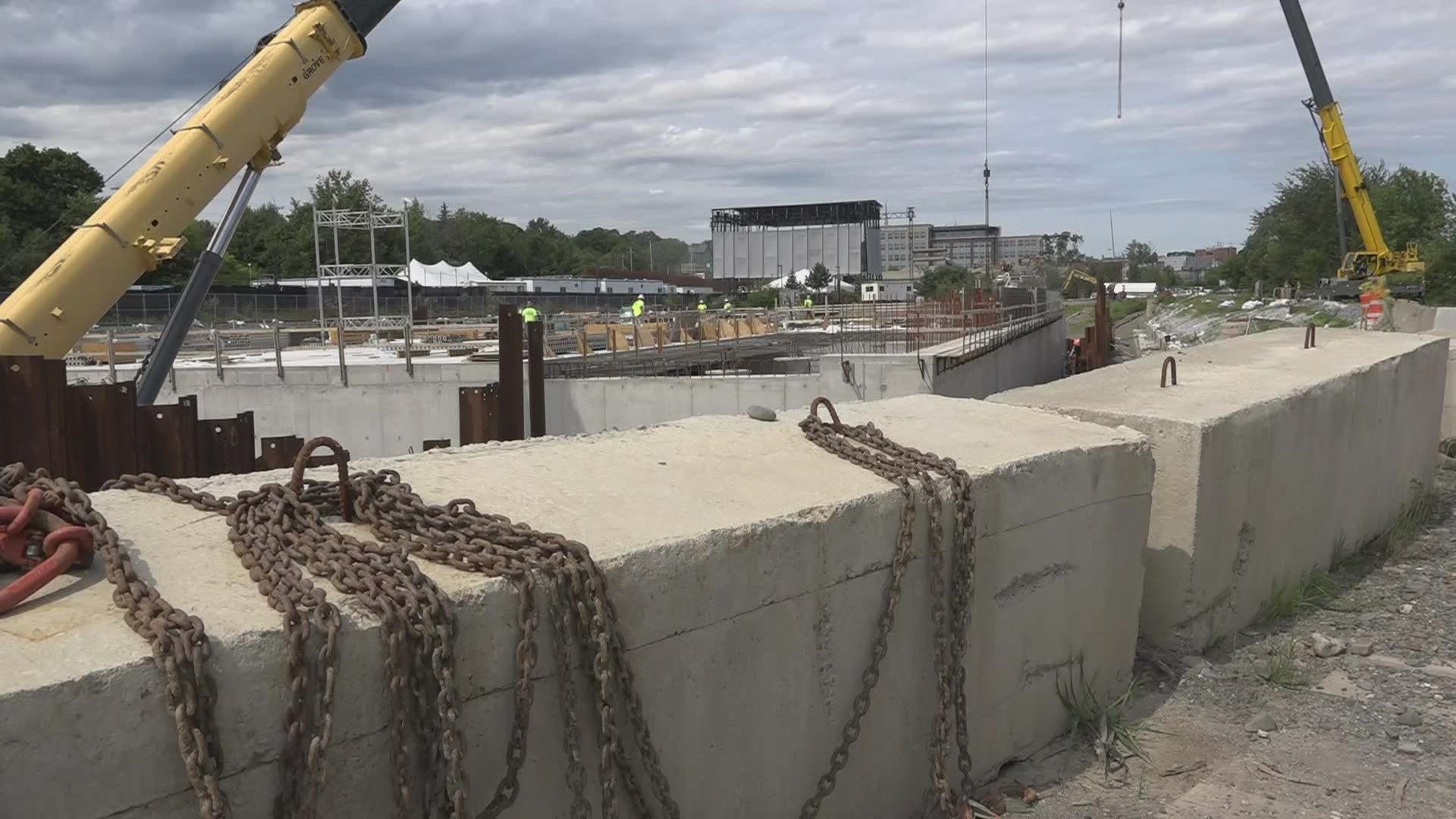BANGOR, Maine — Bangor's record-breaking rain in July highlights the need for a project that's currently underway along the city's waterfront.
In February of 2020, crews began working on the Davis Brook Combined Sewer Overflow (CSO) Storage Tank Project. Construction workers are installing a 3.8 million gallon tank below ground.
The goal is to reduce contamination of the Penobscot River when heavy rains and snowmelt overwhelm the city's sewer system and wastewater treatment plant. Reducing CSO's will not only improve the river's water quality, but it will also encourage more recreational activities on and near the river.
Amanda Smith, Bangor's Director of Water Quality Management, said this storage tank will help workers at the wastewater treatment plant breathe a little easier during big weather events once it's completed.
“It has a maximum flow capacity of 43 million gallons in a day, and when we have these heavy storms or storms with snowmelt on top of that, it easily overwhelms the treatment plant,” she said.
John Theriault, City Engineer for Bangor, said the project was initiated by a consent decree from the Department of Environmental Protection (DEP) and the Environmental Protection Agency (EPA) in 2015.
“A consent decree is basically an agreement from the DEP and EPA saying, 'Hey Bangor, you guys are putting raw sewer out to the river. We don’t really like it. We’d like you to do something about it,'” Theriault said.
The Davis Brook Project is the first of many projects to be developed through that decree. In 2015, there were a total of 49 CSO events where rain and snowmelt flooded the Penobscot River. City officials hope this storage tank will reduce that number to four.
The project is scheduled to be complete by June of 2022.
To learn more about the project and see pictures of the step-by-step progress the crews have made since February of 2020, click here.

